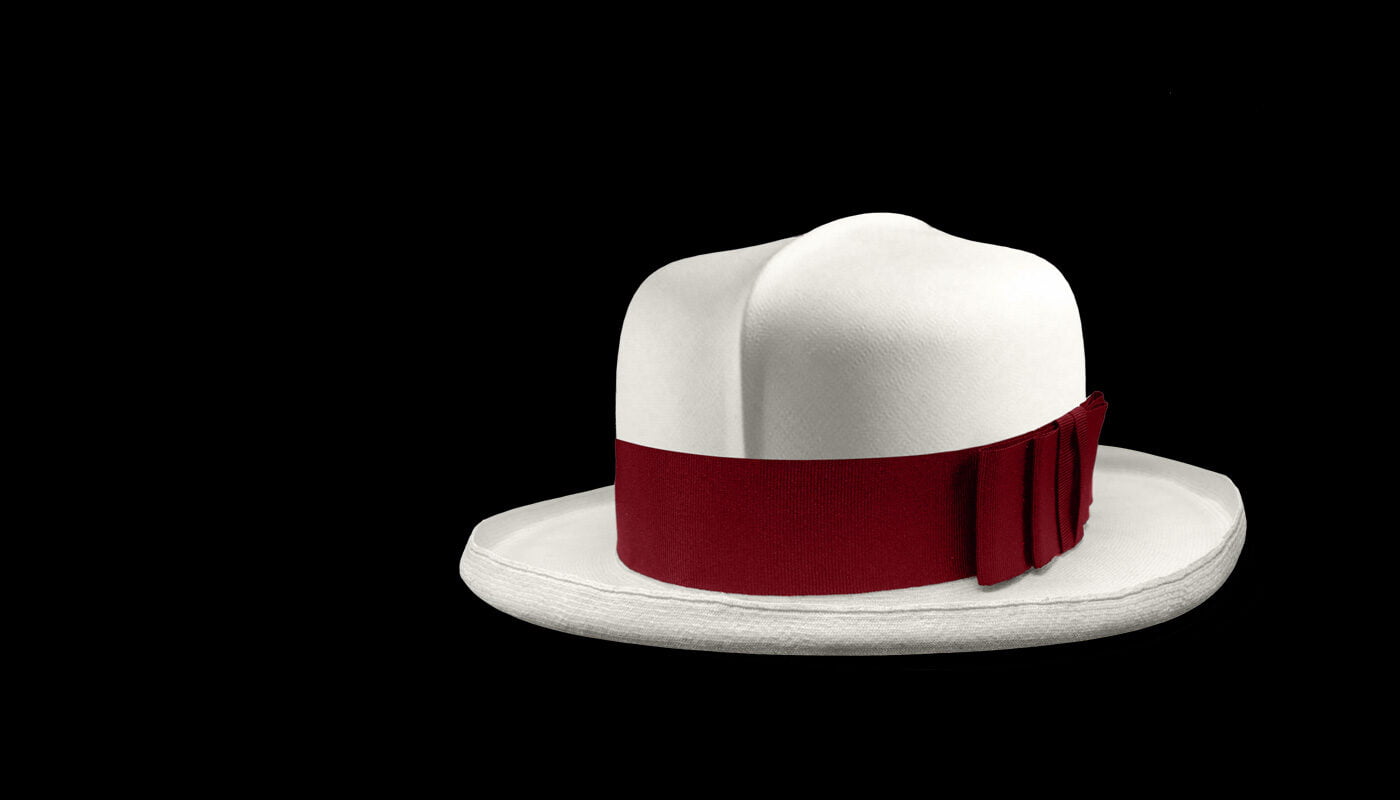Modern Art
MoMA – Domingo Carranza Hats
Moma - ITEMS - domingo carranza hats
The Museum of Modern Art, or MoMA, is one of the world’s most prestigious institutions for the exhibition and collection of modern and contemporary art. It was founded in 1929 by a group of influential art patrons, including Abby Aldrich Rockefeller and Lillie P. Bliss, who sought to establish a museum that would showcase the best of contemporary art from around the world. But how would a museum of this level arrive at the commission of the Domingo Carranza hats?
MoMA was founded at a time when modern art was still considered controversial and avant-garde. The museum played a crucial role in legitimizing modern art and introducing it to a wider audience, through its exhibitions and collections. In its early years, MoMA focused on showcasing the work of artists from Europe and the United States, including Pablo Picasso, Henri Matisse, and Jackson Pollock, among others.
Over time, MoMA expanded its scope to include artists from other parts of the world and to explore a wider range of artistic movements and styles. Today, the museum’s collection includes over 200,000 works of art, including paintings, sculptures, photographs, films, and more, from the 19th century to the present day.
MoMA’s importance in the art and design world lies in its role as a center for innovation, experimentation, and critical inquiry. The museum has always been at the forefront of contemporary art and design, showcasing the work of emerging artists and pushing the boundaries of what is considered “art” or “design.” It has also been a leader in the development of new exhibition and curatorial practices, such as the use of multimedia and immersive installations, which have influenced museums around the world
MoMA’s collections and exhibitions have had a profound impact on the history of modern and contemporary art and design. The museum’s exhibitions have introduced new artists and movements to the public, and its collections have helped to establish new canons of art and design. The museum has also played an important role in shaping the discourse around modern and contemporary art, through its publications, symposia, and educational programs.
MoMA’s influence extends beyond the art world, into the fields of architecture, design, and popular culture. The museum has been a leader in the recognition of design as a legitimate form of artistic expression, through its exhibitions and collections of industrial design, graphic design, and architecture. It has also had a significant impact on popular culture, through its collaborations with fashion designers, filmmakers, and musicians, among others.
MoMA is an institution of great importance to the history of modern and contemporary art and design. Through its collections, exhibitions, and educational programs, the museum has played a central role in shaping the art and design world as we know it today. Its commitment to innovation, experimentation, and critical inquiry has made it a leader in the field, and its influence extends far beyond the walls of the museum.
Domingo Carranza Hats, the craftsman
In short, it is the museum where every living artist of the 20th or 21st century would dream of exhibiting his artistic work. For me, visiting the MoMA is a whole ritual, a therapy, unfortunately I can visit it much less than I would love to, but when I have done it, I have spent days going through all the corners of that cathedral of art, I have walked through all the corridors, I I know the bathrooms, the emergency exits and of course each one of the exhibitions that I have had the pleasure of visiting. Many times I try to imagine what an artist must feel when seeing his work in those rooms, on those walls, with that lighting. Every time I do this exercise I realize that I have an admired friend who has lived this experience firsthand, the master craftsman weaver of Panama hats from Montecristi Domingo Carranza.
Domingo Carranza is a renowned Ecuadorian hat weaver who has gained international recognition for his exceptional skills and craftsmanship in creating fine Toquilla straw hats, also known as Panama hats. Born in the small town of Pile, in the province of Manabí, Ecuador, Carranza learned the art of hat weaving from his father and grandfather, who were also master weavers.
Carranza began weaving hats at a young age and quickly developed a passion for the craft. He honed his skills over the years, mastering the intricate techniques required to create high-quality Panama hats. His dedication and talent soon earned him a reputation as one of the best hat weavers in Ecuador.
Carranza’s career took off when he was discovered by a French fashion designer who was visiting Ecuador in search of authentic Panama hats. The designer was impressed by Carranza’s work and commissioned him to create a collection of hats for his fashion line. This marked the beginning of Carranza’s international career, as his hats soon became sought after by fashion designers and hat enthusiasts around the world.
Over the years, Carranza has continued to refine his craft, experimenting with new techniques and styles to create hats that are both beautiful and functional. His hats are known for their exceptional quality, durability, and lightness, which make them ideal for wearing in warm climates.
Carranza has also become an advocate for preserving the art of hat weaving in Ecuador. He has worked with local communities to promote the craft and to ensure that future generations have the opportunity to learn and continue this important tradition.
In recognition of his contributions to the art of hat weaving, Carranza has received numerous awards and honors, including the National Prize for Popular and Traditional Art in Ecuador. His hats have been exhibited in museums and galleries around the world, including the Museum of Modern Art in New York.
Domingo Carranza is a master hat weaver whose exceptional skill and dedication have earned him international recognition and acclaim. His career is a testament to the importance of preserving traditional crafts and to the enduring appeal of handmade goods.
The Museum of Modern Art, also known as MoMA, is a world-renowned institution located in New York City. It is home to some of the most significant and influential works of modern and contemporary art, and has played a crucial role in shaping the art world as we know it today. In 2017, MoMA held an exhibition titled “Items: Is Fashion Modern?” curated by Paola Antonelli and Michelle Millar Fisher, which explored the intersection between fashion and design, and the ways in which clothing has impacted our society and culture over the years. This exhibition had a special significance for the career of Domingo Carranza, a master hat weaver from Ecuador, whose work was featured in the exhibition.
The “Items: Is Fashion Modern?” exhibition at MoMA was a groundbreaking event that explored the relationship between fashion and design, and the ways in which clothing has influenced our culture over time. The exhibition featured a wide range of items, from iconic pieces like the little black dress and the denim jacket to more everyday items like the t-shirt and the hoodie. Through these items, the exhibition explored the history of fashion and design, and the ways in which clothing has been used to express identity, social status, and political beliefs.
One of the most exciting aspects of the “Items” exhibition was the inclusion of items from cultures and traditions that are often overlooked in mainstream fashion discourse. This included the work of Domingo Carranza, a master hat weaver from the small town of Montecristi, Ecuador. Carranza is known for his exquisite Panama hats, which are made from the finest toquilla straw and woven entirely by hand using traditional techniques that have been passed down through generations.
Carranza’s work was featured in the “Items” exhibition alongside other items that spoke to the theme of traditional craftsmanship and its relationship to contemporary design. The inclusion of Carranza’s hats in the exhibition was significant not only because of their beauty and quality, but also because they represented an important aspect of Ecuadorian culture that is often overlooked in discussions of fashion and design.
For Carranza, the inclusion of his work in such a prestigious exhibition was a significant moment in his career. It was an opportunity to showcase his skills to a global audience and to highlight the importance of traditional craftsmanship in contemporary design. It was also a moment of validation for Carranza and other artisans like him, who often struggle to gain recognition for their work in a world that values mass production and fast fashion over traditional techniques and handcrafted goods.
The inclusion of Carranza’s work in the “Items” exhibition also spoke to a larger trend in the fashion and design world towards a renewed appreciation for traditional techniques and craftsmanship. In recent years, there has been a growing interest in handmade goods, artisanal techniques, and sustainable practices, as consumers seek to move away from the fast-paced, disposable culture of fast fashion. This shift has created new opportunities for artisans like Carranza, who are able to bring their skills and traditions to a new generation of consumers.
In many ways, the “Items” exhibition at MoMA represented a turning point in the fashion and design world, as it brought together traditional craftsmanship and contemporary design in a way that had never been done before. It also provided a platform for artisans like Carranza to showcase their work and to contribute to a larger conversation about the role of fashion and design in shaping our society and culture.
The “Items: Is Fashion Modern?” exhibition at MoMA was a significant moment in the career of Domingo Carranza and a testament to the importance of traditional craftsmanship in contemporary design. By including Carranza’s work alongside other items that spoke to the theme of traditional techniques and craftsmanship, the exhibition highlighted the significance of artisanal practices in a world that is increasingly dominated by mass production and fast.







Great Hats, wonderful person. Both of you are top artist anda your work is simply the best